How the UK's prettiest seaside towns used to look
Bucket and spade holidays
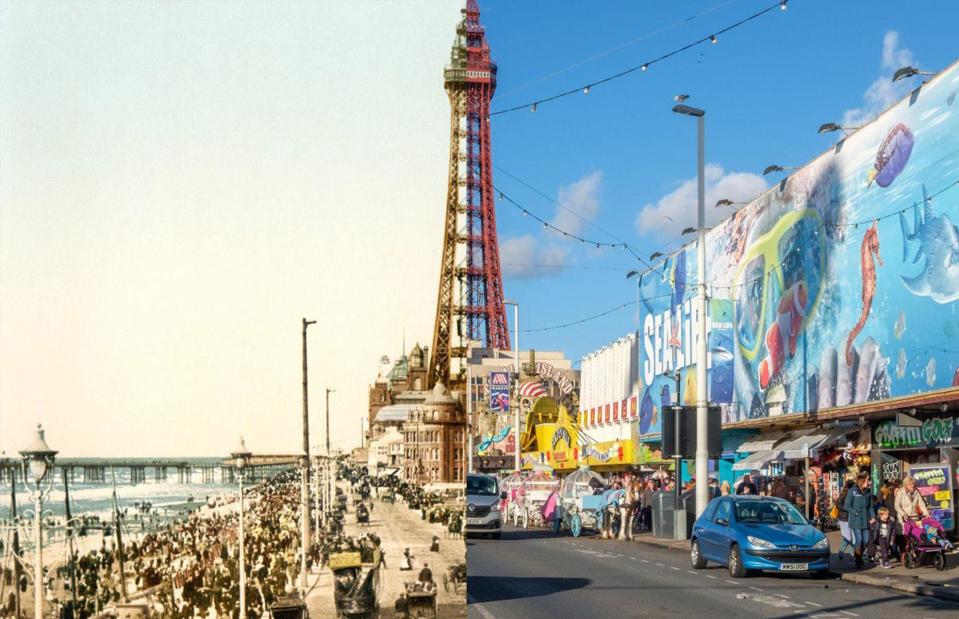
United States Library of Congress / Wikimedia Commons | Rolf_52 / Alamy Stock Photo
The British love affair with seaside holidays can be traced back to the late 18th century, when sea bathing for health became fashionable among the upper classes. But it really took off for everyone else during the Victorian period (roughly between 1820 and 1914), when the first railways started operating around the UK. This influx of visitors helped coastal villages to flourish into seaside towns. While some remain popular today, many have been in decline since the 1970s when cheap holidays abroad started taking off.
Read on to see fascinating 'then and now' photos of the UK's prettiest seaside towns...
Then: Scarborough, North Yorkshire, England
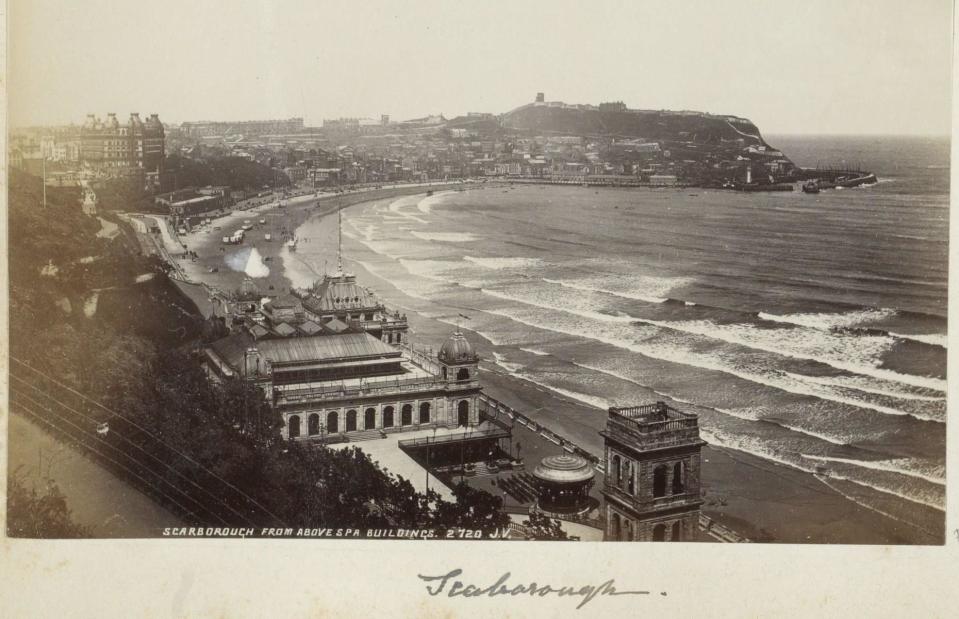
James Valentine/Wikimedia Commons
Scarborough in North Yorkshire is considered by many to be the UK’s first seaside resort. This was due to the discovery of a mineral spring during the 17th century that turned it into a spa town, with visitors coming to enjoy the healing powers of the water. But its popularity really boomed in 1845 when the Scarborough-York railway opened alongside its first hotel, the Crown. Then in 1867, the Grand Hotel opened in Scarborough; it was the largest hotel in Europe at the time, with famous guests including Sir Winston Churchill and The Beatles.
Now: Scarborough, North Yorkshire, England
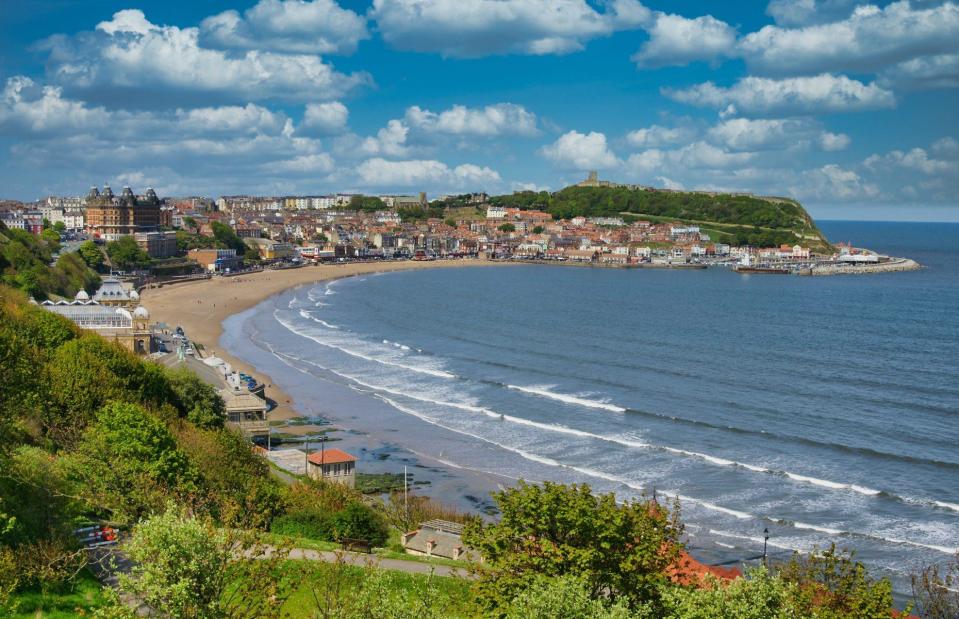
Rodney Hutchinson/Shutterstock
With over 2.2 million visitors in 2022, Scarborough remains hugely popular. What makes it particularly attractive is the number of family-friendly activities, from landscaped parks and gardens to a 3,000-year-old castle that overlooks the dramatic cliffs. There’s still a nod to tradition here too, with donkey rides on the beach and colourful deck chairs where you can sit back and enjoy an ice cream. In fact, many of those returning year after year first came to Scarborough as children.
Then: Whitby, North Yorkshire, England
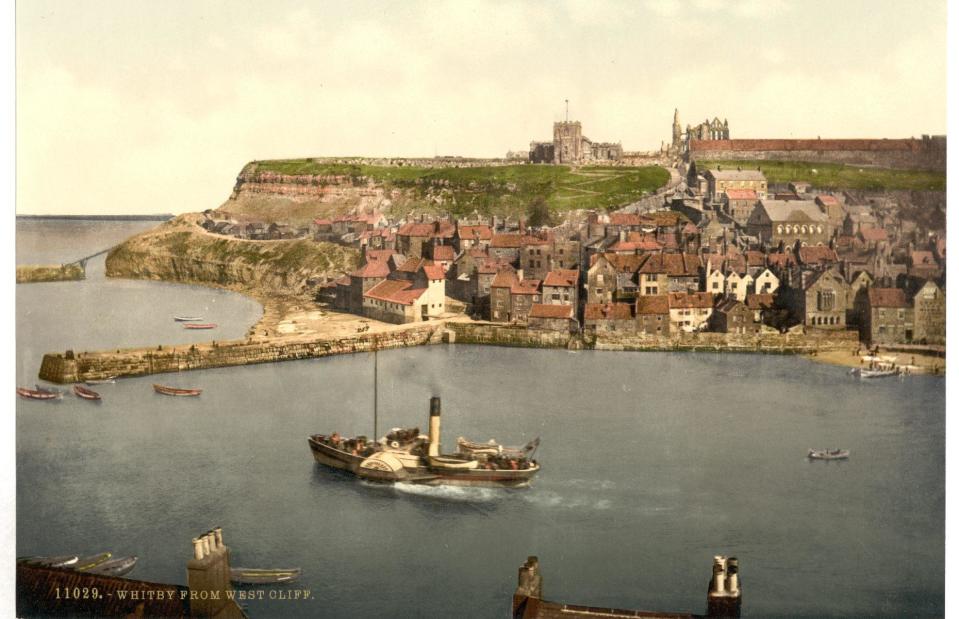
Photochrom Print Collection / Wikimedia Commons
With a rich history that dates back to the Bronze Age, Whitby was already a boom town during the Victorian period. Whaling, which began here in the mid-1700s, was a thriving industry that employed most of the North Yorkshire town's residents. When a local black gemstone, the Whitby Jet, became the stone of mourning following the death of Prince Albert in 1861, the town saw an even bigger boost to its economy. Its most notable visitor is perhaps Bram Stoker, whose 1897 novel Dracula sealed Whitby’s destiny as a pilgrimage site for horror fans.
Now: Whitby, North Yorkshire, England
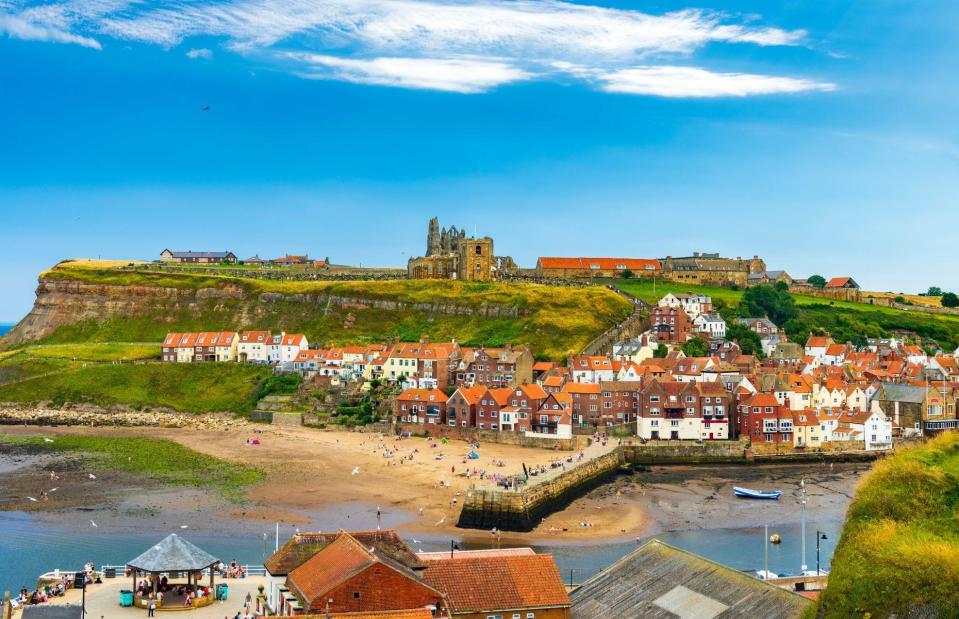
allouphoto / Shutterstock
Whitby’s heyday was short lived; its whaling industry had ended by 1837, and Whitby Jet fell out of fashion at the beginning of the 20th century. Thanks to the enduring popularity of Bram Stoker’s Dracula, however, this seaside town still enjoys a cult status that attracts many UK and international tourists. Events such as the Whitby Goth Weekend usually attract 10,000 visitors each year. There are also several heritage attractions, such as the 7th century Whitby Abbey, as well as the famous 20-foot (6m) whale bone arch, that make it a popular spot for seaside breaks.
Then: Rhyl, Denbighshire, Wales
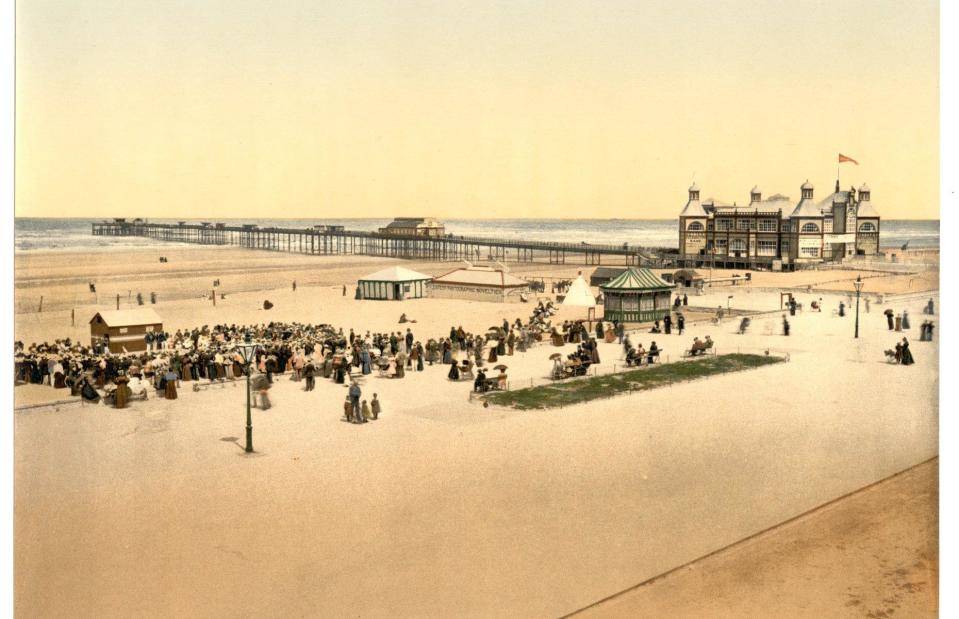
Photochrom Print Collection / Wikimedia Commons
With a long, sandy beach facing the Irish sea, Rhyl’s appeal as a holiday destination is obvious. When the first trains arrived in 1848, tourism boomed. Rhyl's most famous attraction – a 2,355-foot-long (718m) pier – actually didn’t open until almost 20 years later in 1867. It was the first pier in north Wales, and came with a train that ferried visitors along its length. Damage from ships and storms in subsequent years meant the pier had to be substantially reduced, and eventually demolished in 1973.
Now: Rhyl, Denbighshire, Wales
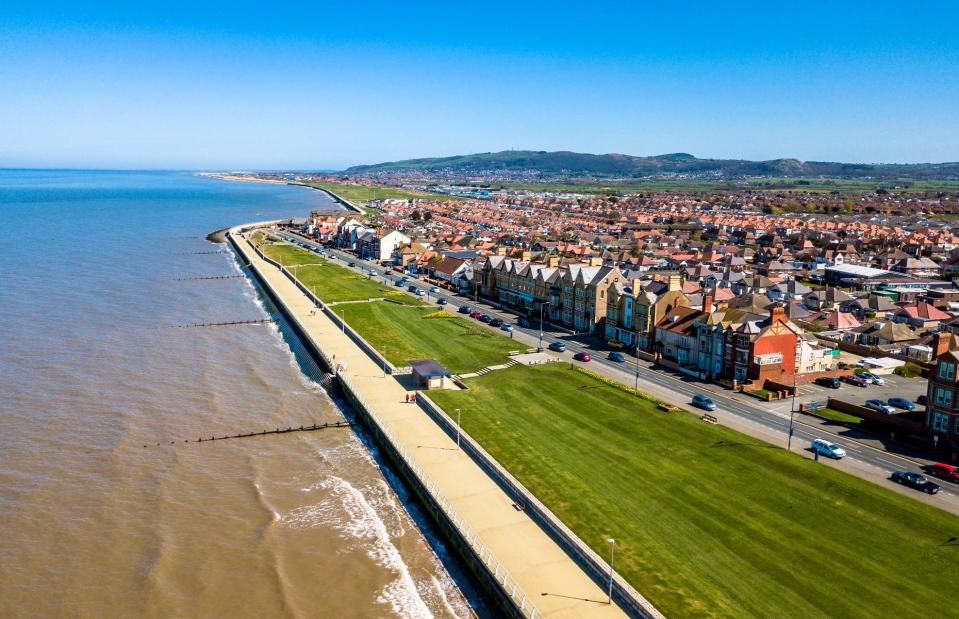
Lukassek / Shutterstock
Rhyl has seen a steady decline since the 1970s when cheap package holidays abroad started taking off. However, each year, the town still attracts thousands of visitors looking for a reliable bucket and spade holiday, though there are far more popular beach resorts in north Wales. The Rhyl Miniature Railway, which first opened in 1911, is still operational and is its key attraction today. Millions of pounds’ worth of investment has poured in as part of regeneration projects in the last decade, especially around the promenade – though as of 2024, they’re still unfinished.
Then: Skegness, Lincolnshire, England
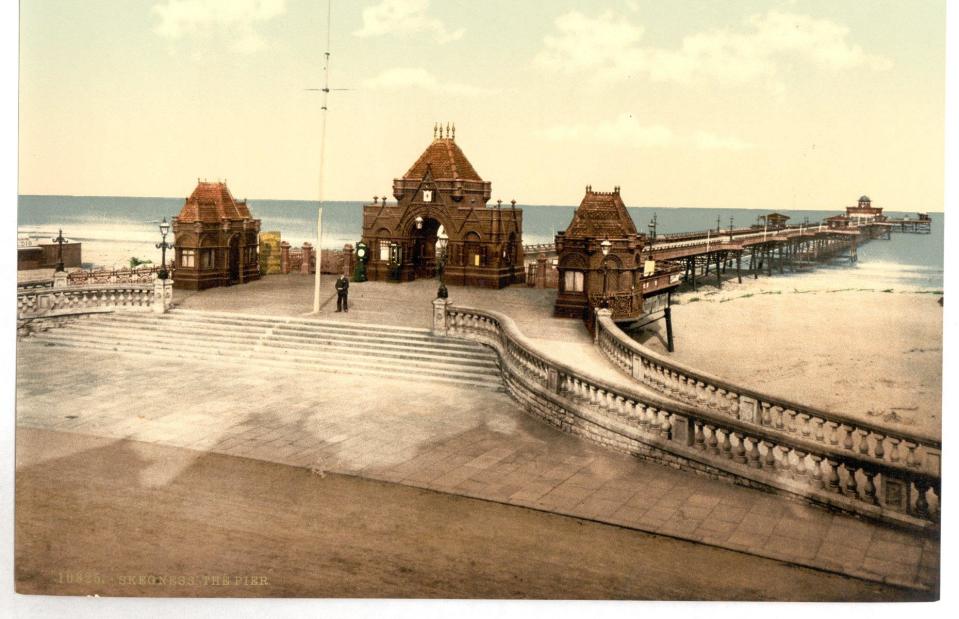
Photochrom Print Collection / Wikimedia Commons
Skegness, in Lincolnshire, was already a popular bathing spot for the local landed gentry, but it really flourished from a rural fishing village into a town after the arrival of the rail network in 1873. At the time, most of the land belonged to the Earl of Earl of Scarbrough, who built key attractions such as the pier, promenade and the parks and gardens to attract the growing number of day trippers. In 1885, Skegness also became home to the UK’s first Switchback Railway, an early version of a roller coaster.
Now: Skegness, Lincolnshire, England
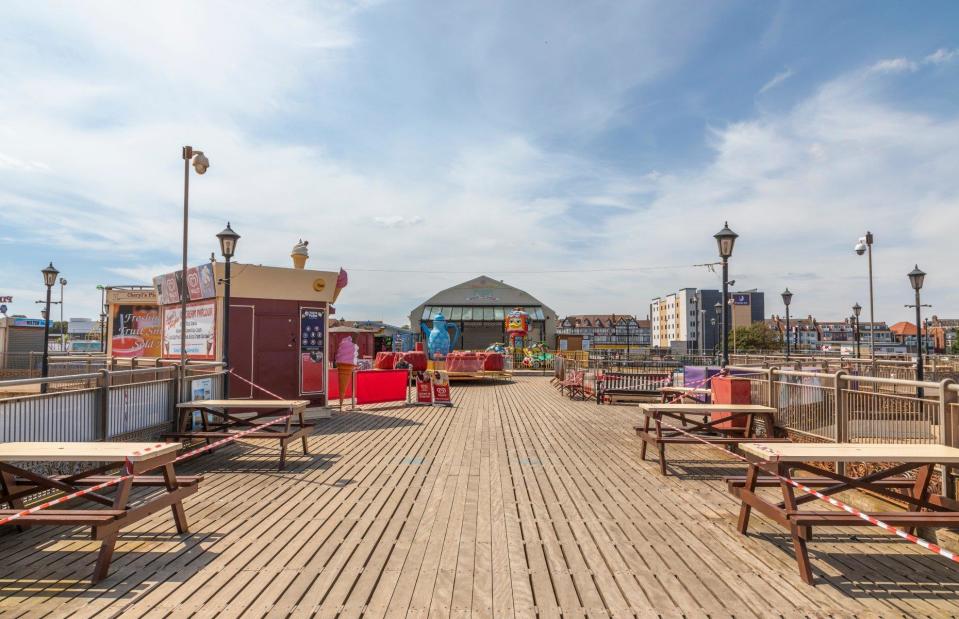
Elizabeth Iris / Shutterstock
Visitor numbers have waxed and waned over the years but Skegness remains hugely popular for staycations and day trippers. In 2022, it received 2.3 million visitors, making it one of the most popular seaside resorts in the UK. One reason is that Skegness is affordable and family-friendly thanks to the huge number of caravan parks. The Victorian pier still exists, although it’s much shorter than the original, and there’s a promenade with arcades as well as an amusement park.
Then: Rothesay, Isle of Bute, Scotland
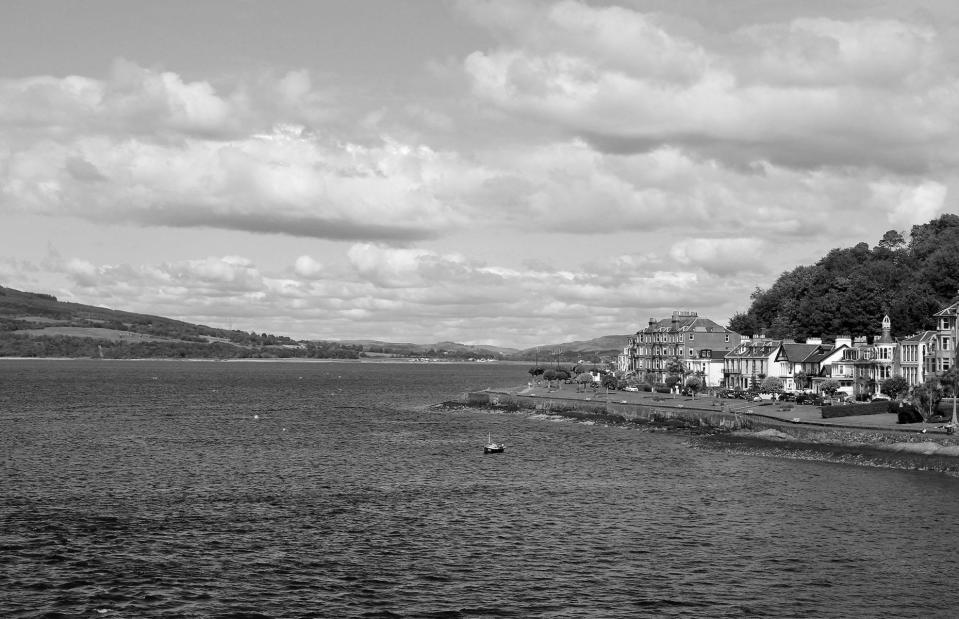
David Falconer/Shutterstock
During the Victorian era, Rothesay became a popular tourist destination, particularly with Glaswegians, who'd come down the River Clyde on regular steamboats to weekend there. An electric tramway connected Rothesay to Ettrick Bay on the west coast. Rothesay is the largest town on Bute, made famous by its unique, circular, 13th-century castle. In 1400, it was made a royal burgh (borough) by King Robert III and redeveloped into a bustling resort town.
It had its heyday in the 1970s when tourists would flock to the town from other parts of Scotland mainly, but Rothesay's population has been in decline ever since. In the 1950s, there were more than 10,000 residents. By 2021, the number had dwindled to around 4,320.
Now: Rothesay, Isle of Bute, Scotland
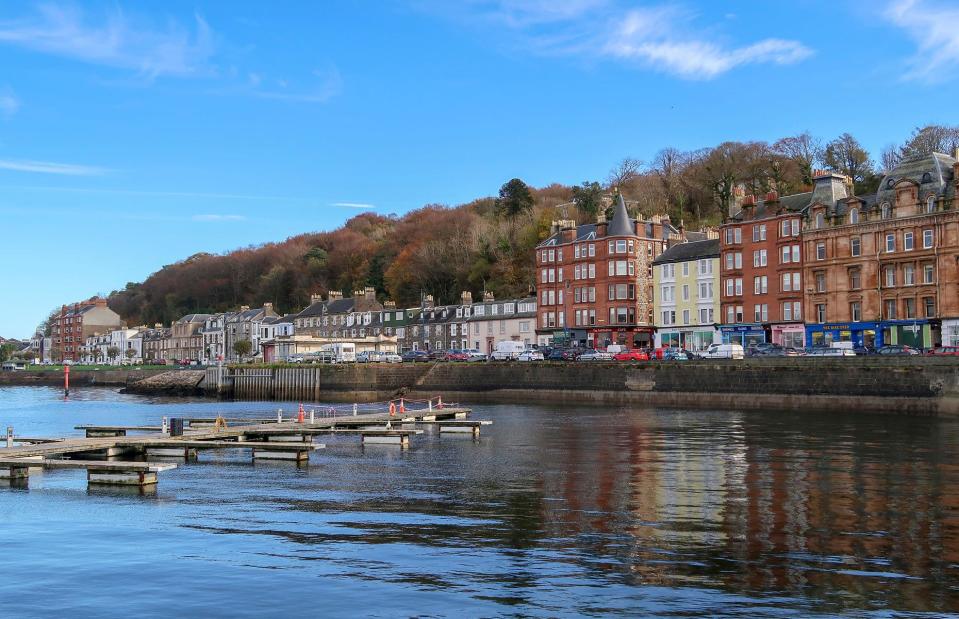
SallyAkins/Shutterstock
There are many fine examples of Victorian architecture throughout the town, including a pretty frontage cradling the bay, the Court House and Baroque post office. The seafront esplanade is Rothesay's main focal point, while its harbour (pictured) draws both day trippers and holidaymakers who want a base for exploring the rest of the island.
The Victorian toilets here are something of a tourist attraction too. Built in 1899, they feature beautiful tile work, marble furnishings, copper piping and mosaic flooring. It's only the gentlemen's toilets that are Victorian, though.
Then: Morecambe, Lancashire, England

KGPA Ltd / Alamy Stock Photo
The Lancashire town of Morecambe grew out of the fishing village of Poulton-le-Sands after a rail link was established by the Morecambe Harbour and Railway Company in 1846. But it wasn’t officially known as Morecambe until 1889, when the villages of Poulton-le-Sands, Bare and Torrisholme came together to form the new town.
As a seaside resort, Morecambe had a thriving tourism industry thanks to visitors from the rest of Lancashire and neighbouring county Yorkshire, who came for the Winter Gardens (a grand Victorian ballroom), the piers and promenade, and of course the picturesque Morecambe Bay.
Now: Morecambe, Lancashire, England
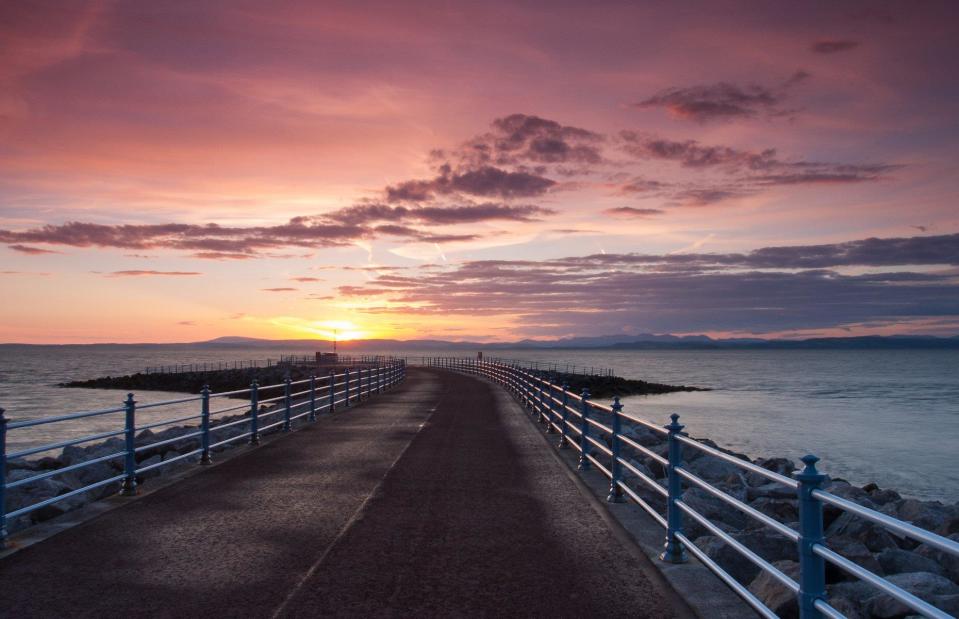
Radomir Rezny / Shutterstock
The town managed to maintain a thriving tourism industry until well into the mid-20th century and was home to the UK’s biggest Pontins (a British holiday park). But like other seaside resorts, its decline came in tandem with the arrival of cheap package holidays abroad. Its main pier was demolished in 1978, while the second one was removed in 1992. And in 1993, Pontins also closed.
The town still has some tourism appeal though, mainly because of its collection of Victorian and Art Deco buildings, while the rail link continues to bring in day trippers from nearby cities.
Then: Bournemouth, Dorset, England
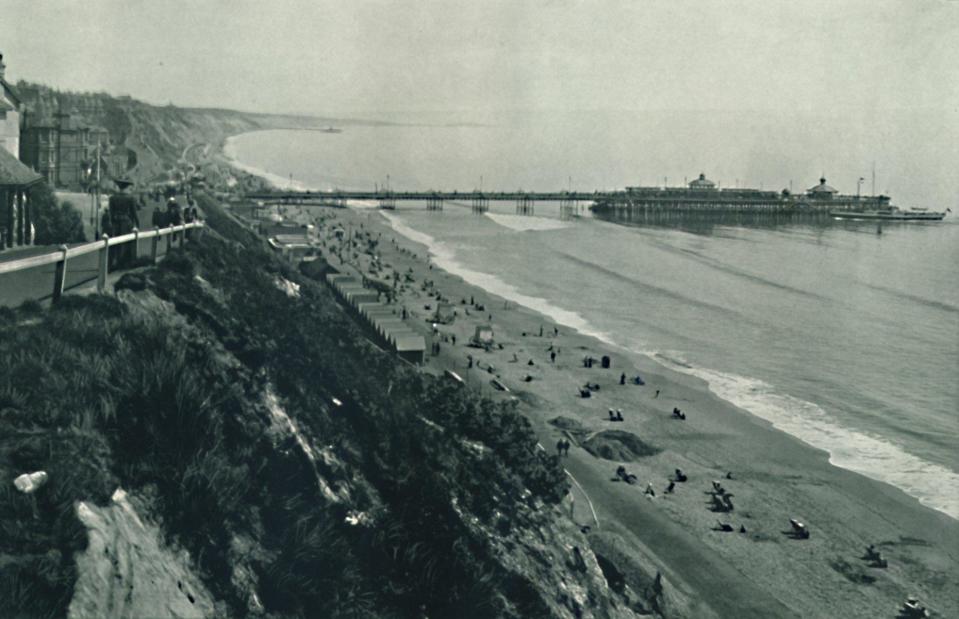
Print Collector/Getty Image
Bournemouth, on England's south coast, began as a seaside resort commissioned by politician Sir George Tapps-Gervis, with villas built to be holiday homes for hire. But by 1840, a village had emerged, with a travel guide published for visitors who were beginning to arrive by stagecoach. Its boom period really started with the rail network in 1870, and the population increased dramatically from 1,707 in 1861 to 16,859 in 1881. Key attractions such as the Winter Gardens theatre, Pleasure Gardens and Bournemouth Arcade were all built during the 1870s.
Now: Bournemouth, Dorset, England
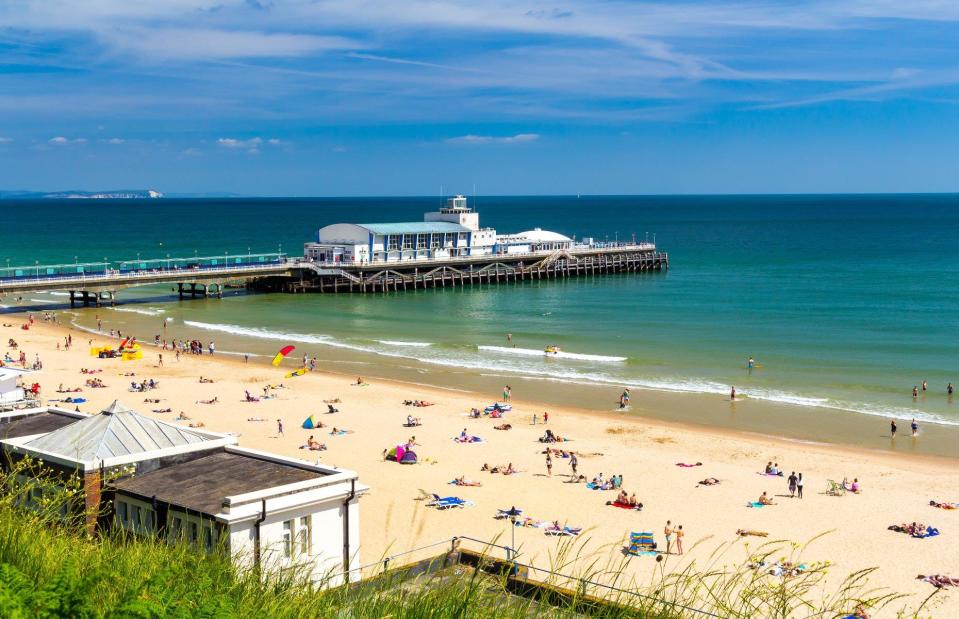
Ian Woolcock / Shutterstock
Bournemouth remains a popular seaside town, attracting 11.7 million visitors in 2022. It has absorbed nearby areas such as Boscombe through expansion, and merged with Christchurch and Poole in 2019, with a single council overseeing services within the BCP area. Victorian attractions, such as its piers and gardens, remain tourist draws alongside the fine, sandy beaches. However, its high street has seen a marked decline since the pandemic.
Then: Ryde, Hampshire, England
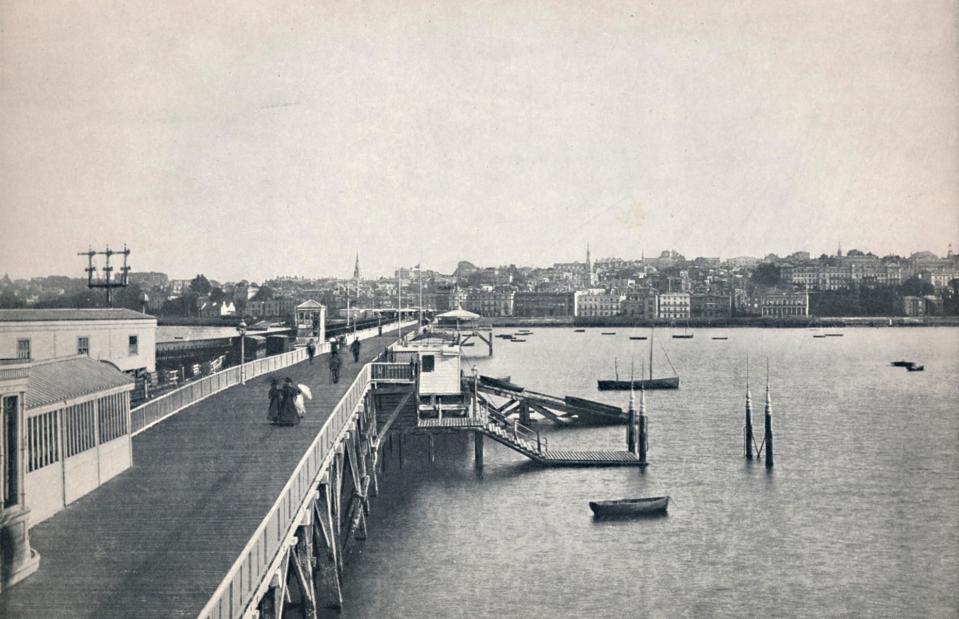
Print Collector/Getty Images
As the gateway to the Isle of Wight, Ryde’s popularity as a seaside resort wasn’t tied to the rail network. Instead, it came with the arrival of the first pier in 1814 – until then, visitors could only come ashore when there was a low tide. This quirk also meant that unlike the resorts catering mainly to day trippers, Ryde was equipped with pubs and inns that allowed people to stay overnight or longer if necessary. It was also notable because Queen Victoria came to visit in 1843 and later purchased the Osborne Estate in 1845.
Now: Ryde, Hampshire, England
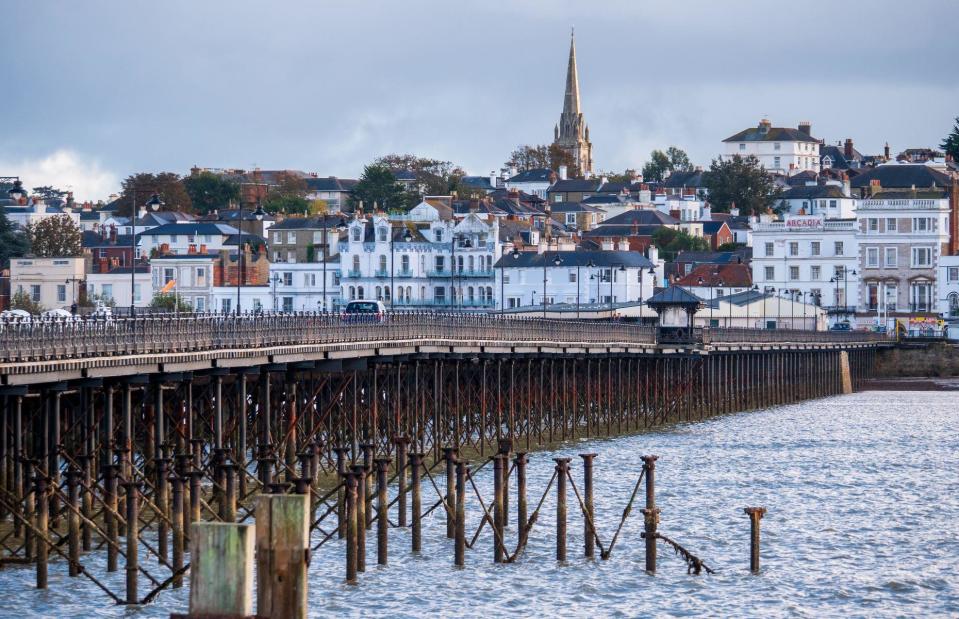
MikeIOW / Shutterstock
Ryde remains the Isle of Wight’s largest town, although it’s no longer the only access point to the island – there are also other ferry terminals along the north coast. Visitor numbers here are tied to the rest of the island, which sees over 2.7 million tourists each year. High-profile events such as the Cowes Week regatta keep visitors coming back each year, while family-friendly attractions including the Isle of Wight Steam Railway and Quarr Abbey also make it a popular choice for summer holidays.
Then: Great Yarmouth, Norfolk, England
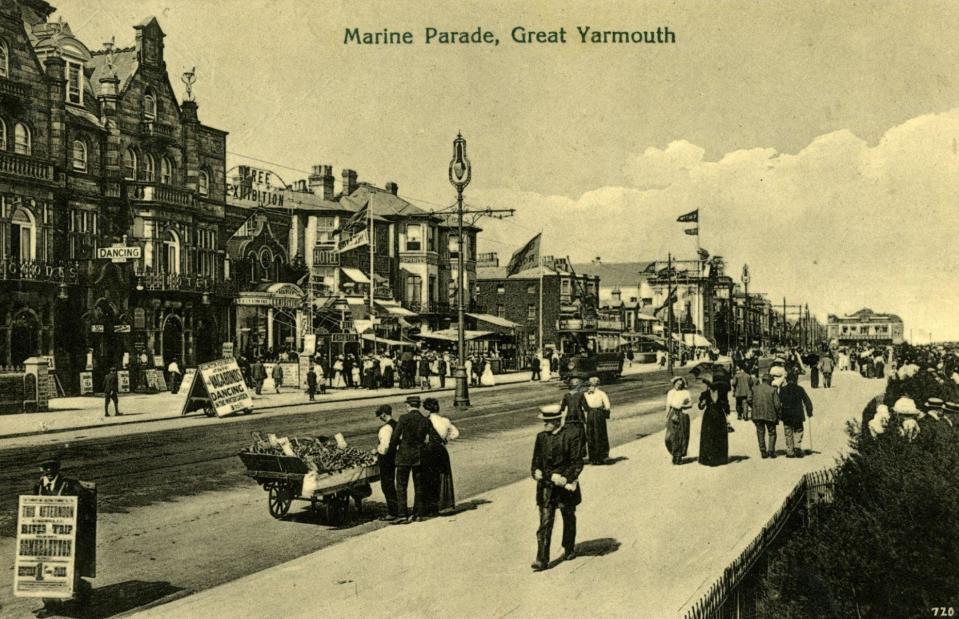
Culture Club/Getty Images
A port since Roman Britain, Great Yarmouth on England's east coast was already known as a seaside resort by the 18th century. When the first trains arrived in 1844, its holiday industry expanded rapidly. Two piers – Wellington and Britannia – were built in quick succession in the 1850s. Then in 1903, the council bought the Winter Gardens from Torquay and used it to establish Great Yarmouth’s Golden Mile, a seafront parade of amusement arcades that led down to the sandy beach. Charles Dickens stayed here while writing David Copperfield.
Now: Great Yarmouth, Norfolk, England
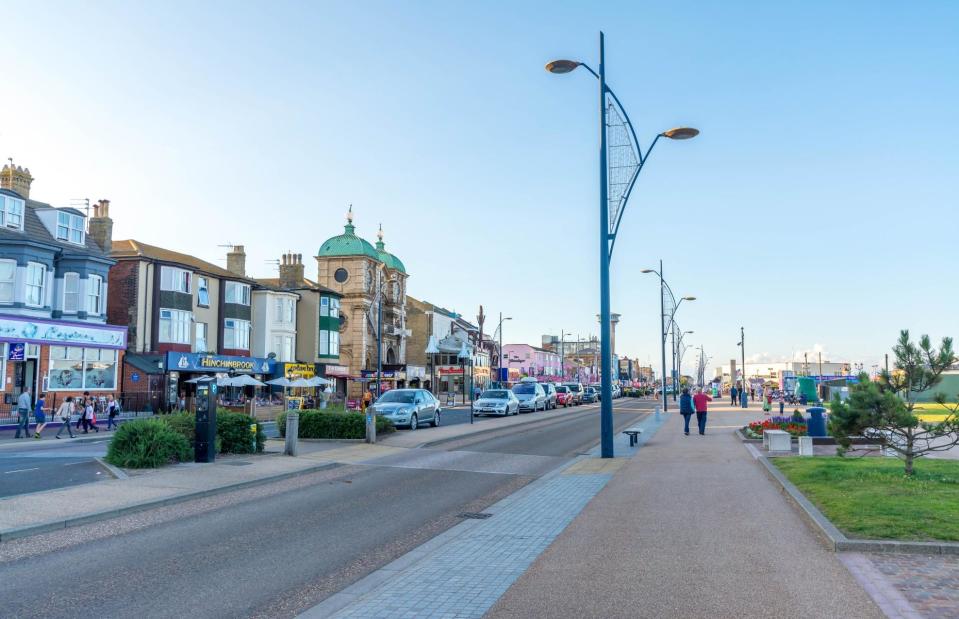
Travel__Photography / Shutterstock
Great Yarmouth remains hugely popular as a seaside town. In 2022, it received 7.5 million day trippers. Both piers remain standing and are packed with attractions such as arcades, a bowling alley and even a pier-end theatre. The Venetian Waterways and gardens, which originally opened towards the end of the 1920s, were restored and reopened in 2019 after a period of disrepair. The local council was also awarded £20 million ($25.2m) Levelling Up funding in 2023 to develop the North Quay area of the town for shops, entertainment venues and homes.
Then: Portstewart, Londonderry, Northern Ireland
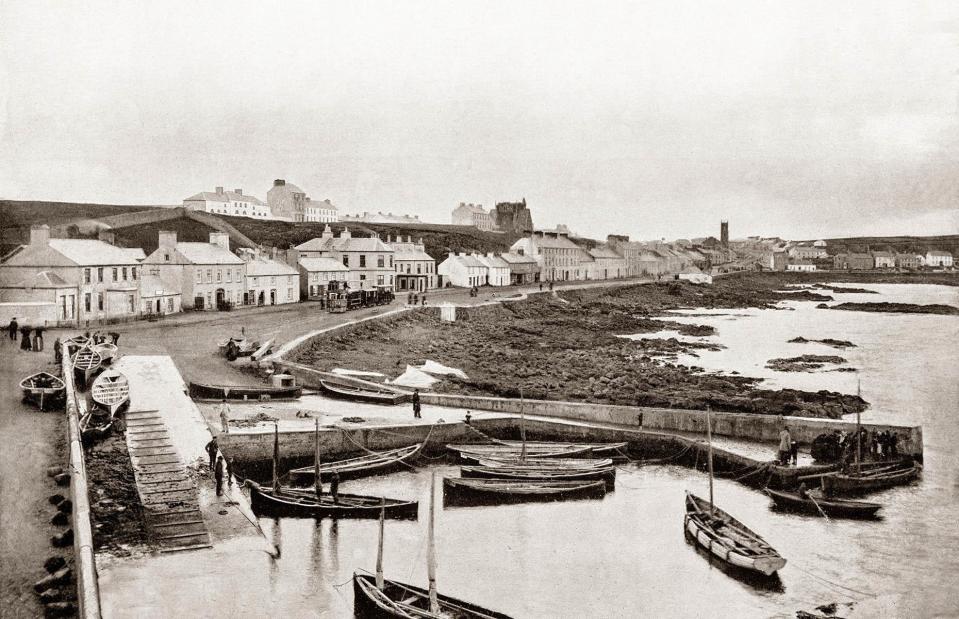
De Luan/Alamy
Having enjoyed a long history as a holiday destination, thanks to the Victorian middle-class families who'd flock here every summer, Portstewart on Northern Ireland's Causeway Coast had – and still has – a lot going for it. Think beautiful crescent-shaped promenade, pretty harbour and two miles (3.2km) of sandy beach (which featured in hit TV series Game of Thrones, and is now managed by the National Trust).
Founded by John Cromie in 1792, when it was little more than a fishing village, it was developed into a small seaside town by the mid-19th century. A tram connection was established between Portstewart and Cromore to link with the railway. The population in 1981 was around 5,300 but increased to almost 8,000 in 2021.
Now: Portstewart, Londonderry, Northern Ireland

shawnwil23/Shutterstock
Holiday homes adorn the town now, as it's a popular base for venturing along the Causeway Coast. The waterfront promenade and harbour still attract holidaymakers and day trippers with their traditional Victorian heritage, while the scenic coastal paths that lead to the beach and the ancient dunes are an easy way to explore Portstewart's best bits. The championship golf course, founded in 1894, now has three 18-hole links courses and draws in golfers from around the world.
Then: Brighton, East Sussex, England

Frith & Co/Wikimedia Commons
Brighton started developing as a seaside resort before the Victorian age. For centuries, it was a tiny fishing village. But in the late 18th century, local doctors started writing about the benefits of bathing in the sea and drinking seawater, and the south coast town was established as a health resort. George IV, then still the Prince of Wales, built the Royal Pavilion in 1787, which became a royal residence. When trains arrived in 1840, Londoners came to Brighton in droves, partly because of the royal family.
Now: Brighton, East Sussex, England
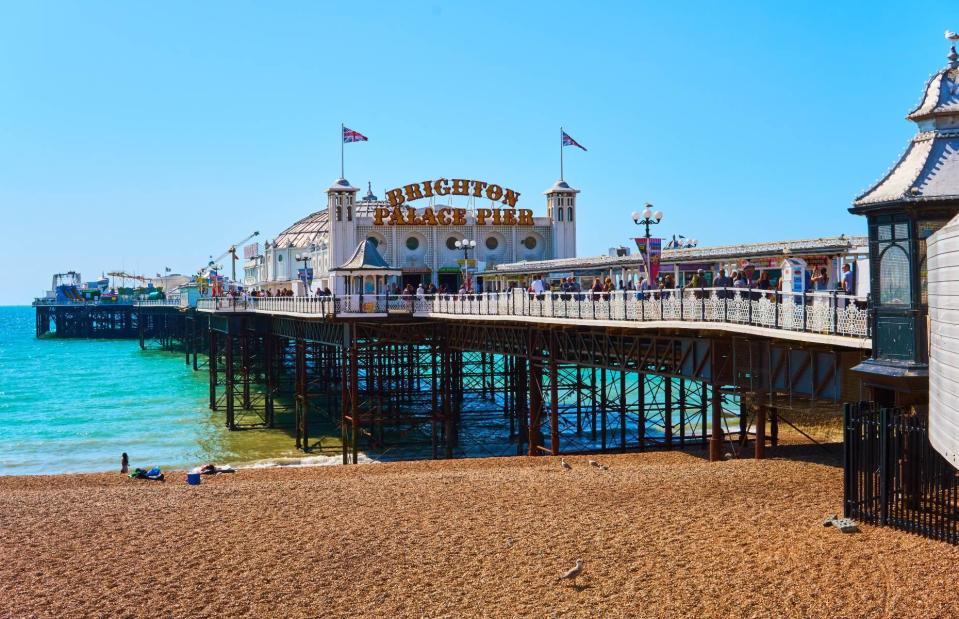
Michaelasbest / Shutterstock
Although Queen Victoria moved the royal residence to Ryde in 1845, Brighton’s popularity continued because of the rail connection. Several industries had also already been established here, including brewing and of course tourism. The town became Brighton and Hove city in 2001, and continues to be popular as a seaside resort, receiving around six million visitors in 2022. But unlike other resorts, it’s very much a lived-in city year-round, with many Londoners now moving here for more affordable homes within easy reach of the capital.
Then: Folkestone, Kent, England
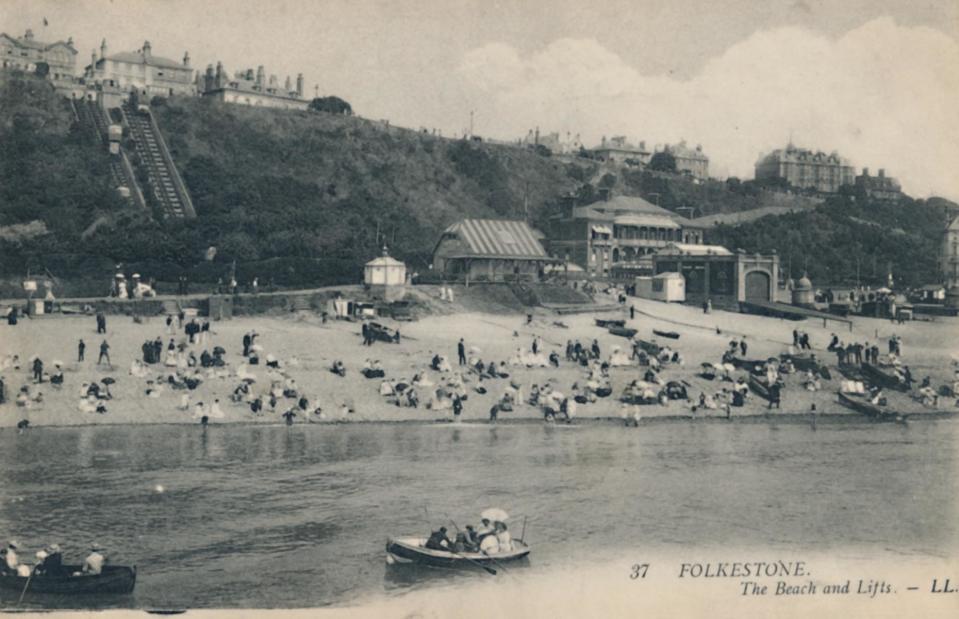
Print Collector/Getty Images
With a history dating back to at least the Roman times, Folkestone was already an important port city by the time the first trains arrived in 1843. It brought well-heeled travellers such as Charles Dickens, who wrote part of Little Dorrit while living in a clifftop villa in the Kent coastal town in southeast England.
Mass tourism was a little slower to pick up compared to neighbouring towns in Kent. Many of the Folkestone's Victorian-era tourist attractions – including the pier, sea bathing facilities and the Leas Lift (a funicular railway) – weren’t built until the 1880s.
Now: Folkestone, Kent, England
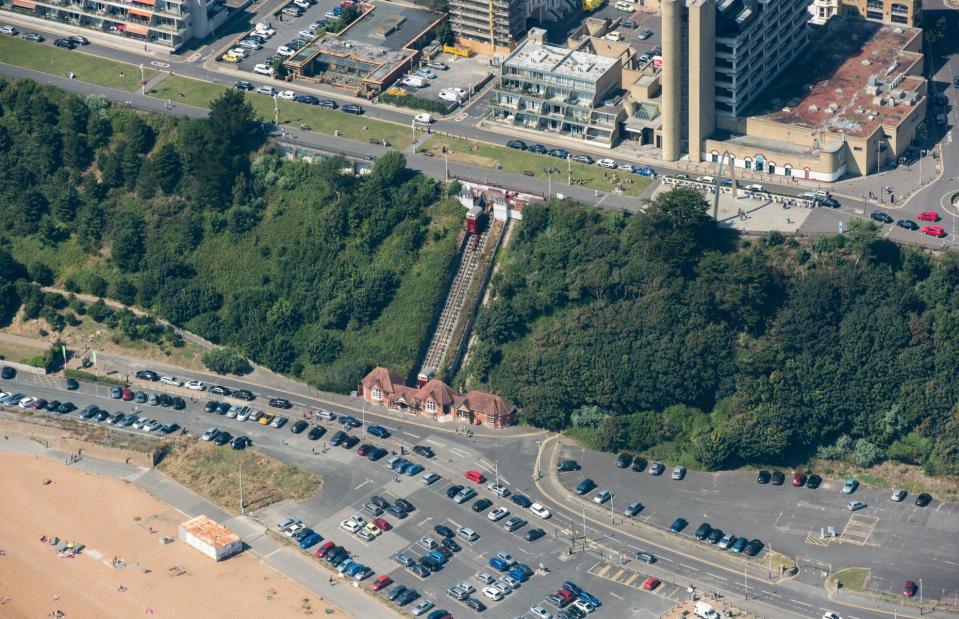
Historic England Archive/Heritage Images via Getty Images
Unlike other seaside towns, tourists continued to arrive in Folkestone after the 1970s thanks to the ferry service that took travellers across the English Channel to Boulogne and Calais in France and Ostend, Belgium. But the tide turned in 2000 when, unable to compete with the Channel Tunnel, the ferry service ended.
Since 2002, there’s been a growing creative industry based in Folkestone, with a Folkestone Triennial showcasing public art since 2008. And thanks to its affordability and proximity to London, it’s becoming an increasingly popular place to live, and an alternative to Brighton.
Then: Eastbourne, East Sussex, England
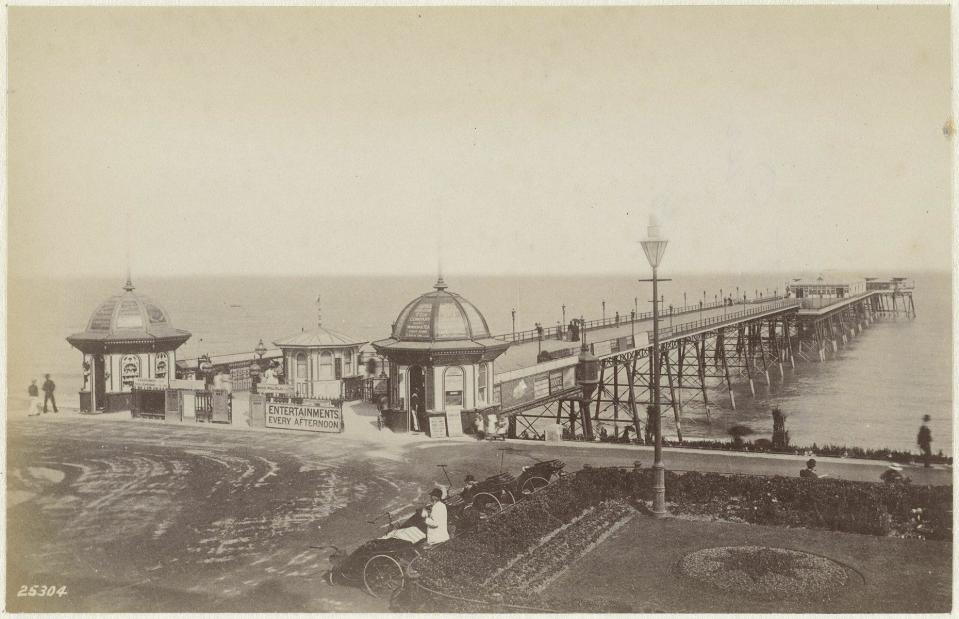
Unknown / Wikimedia Commons
Eastbourne was the name chosen in 1850 by the Earl of Burlington, later Duke of Devonshire, for a planned town that absorbed four hamlets – Seahouses, the Meads, Southbourne and Bourne – on England's Sussex coast. The area was already popular with royalty, so unlike other seaside resorts, this town was geared towards the upper classes. So as part of the plans, Eastbourne included grand seafront townhouses, tree-lined boulevards, attractive gardens and the 1,000-foot-long (303m) pier, completed in 1872. Each week, the local newspaper published a list of notable visitors, such as Lewis Carroll, who wrote Alice in Wonderland here.
Now: Eastbourne, East Sussex, England
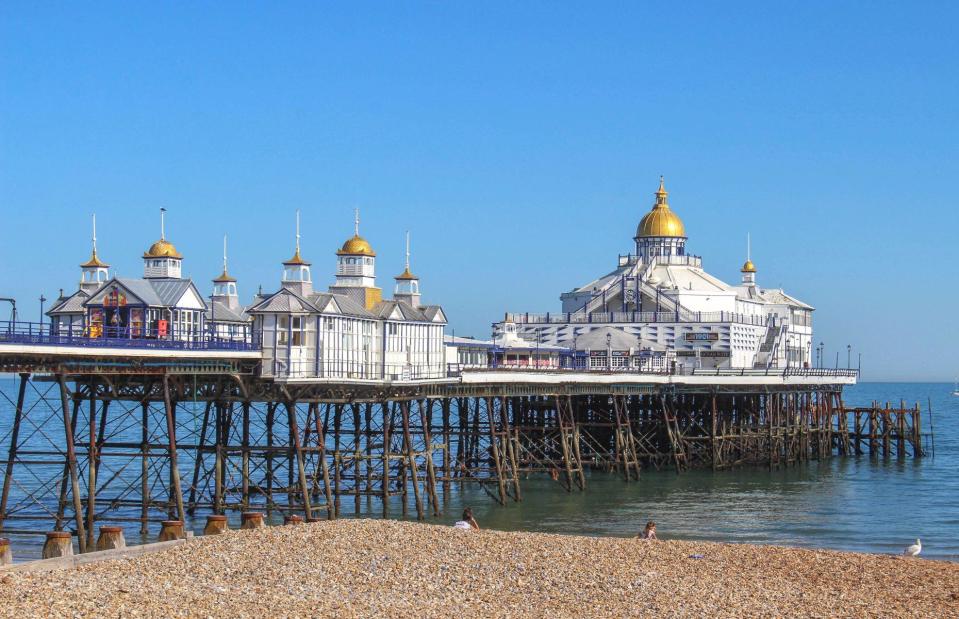
cktravels.com / Shutterstock
Eastbourne receives over five million visitors each year with a long promenade, pier and Sovereign Harbour among the main attractions for tourists. In 2021, the town successfully applied for Levelling Up funding that’s worth around £20 million ($25m) for various regeneration projects. The largest of these is for a new culture and education centre at Black Robin Farm on the outskirts of the town. There’s also a smaller plan to transform Victoria Place into a pedestrianised culture hub that’s populated with cafes and restaurants.
Then: Worthing, West Sussex, England
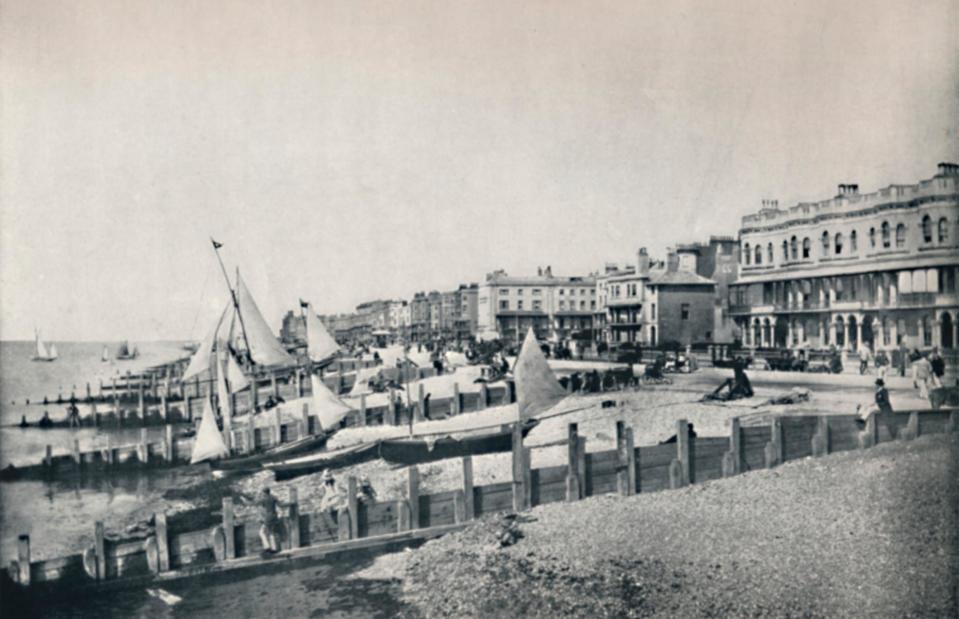
Print Collector / Getty Images
Inhabited since the Stone Age, Worthing started developing into a seaside resort in the late 18th century. Thanks to its proximity to Brighton on England's south coast, and the fact that it was frequented by royals such as Princess Amelia, its popularity grew quickly. In 1803, it became a town with a population of a little over 2,000. By 1890, this had grown to 19,000, with the town upgraded to a borough. One of its most notable visitors is perhaps Oscar Wilde, who wrote The Importance of Being Earnest while summering here.
Now: Worthing, West Sussex, England

Ian Woolcock/Shutterstock
Thanks to its strengths in the business services industry, Worthing hasn’t suffered a decline like other seaside towns. It still receives around five million visitors each year, making it one of the most popular seaside towns in the south. Tourists flock to the seafront, which is based around its historic 1860s pier and five-mile (8km) sand and shingle beach. As well as the coast for wind and kitesurfing, it’s well placed for visiting the South Downs National Park.
Then: Weston-super-Mare, North Somerset, England
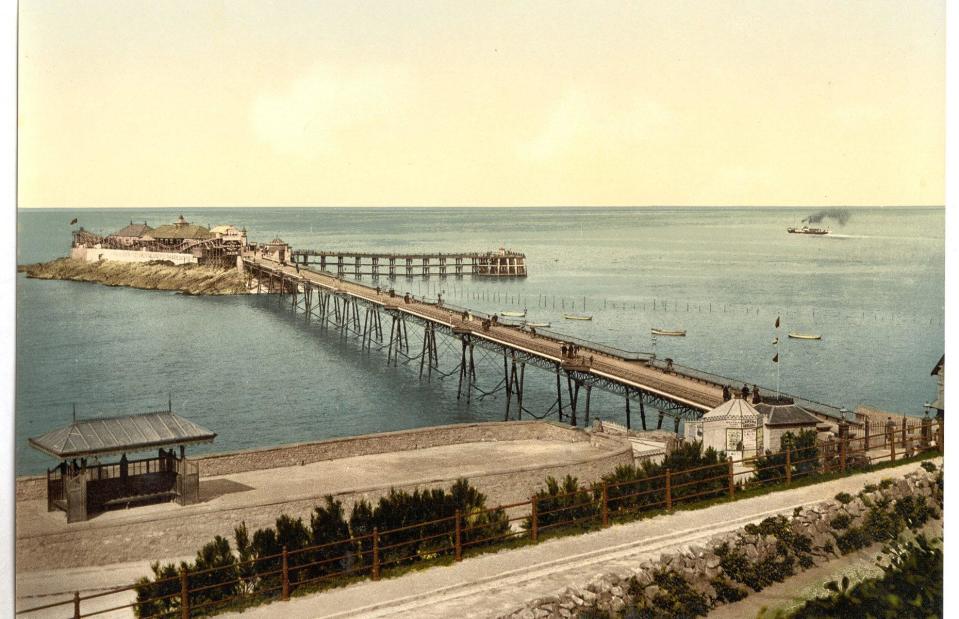
Library of Congress/Wikimedia Commons
Towards the end of the 18th century, Weston-super-Mare in North Somerset was still a small fishing village. But the trend for sea bathing transformed its fortunes, with bathhouses and pools appearing from the 1820s onwards. Its growth was accelerated by the rail link, which arrived in 1841. The two piers were its standout attractions. Birnbeck Pier, opened in 1867, was the first pier to end on an island, while the longer Grand Pier opened in 1904. Weston-super-Mare wasn’t just for day trippers either – its population surged from just over 2,000 in 1841 to over 19,000 by 1901.
Now: Weston-super-Mare, North Somerset, England

Charlesy/Shutterstock
Weston-super-Mare has been experiencing a gradual decline since the 1950s, with floods further adding to its woes. Birnbeck Pier (pictured) is a particularly sorry sight – having been closed since 1994, it has suffered multiple storm damage and is crumbling into the sea. However, there have been some large-scale regeneration projects. In 2007, it was part of a Seafront Enhancement Scheme that restored the promenade and allowed the Grand Pier to reopen. Between 2017 and 2022, it was also part of Historic England’s Heritage Action Zone scheme, which focused on the town’s conservation.
Then: Llandudno, Conwy County, Wales
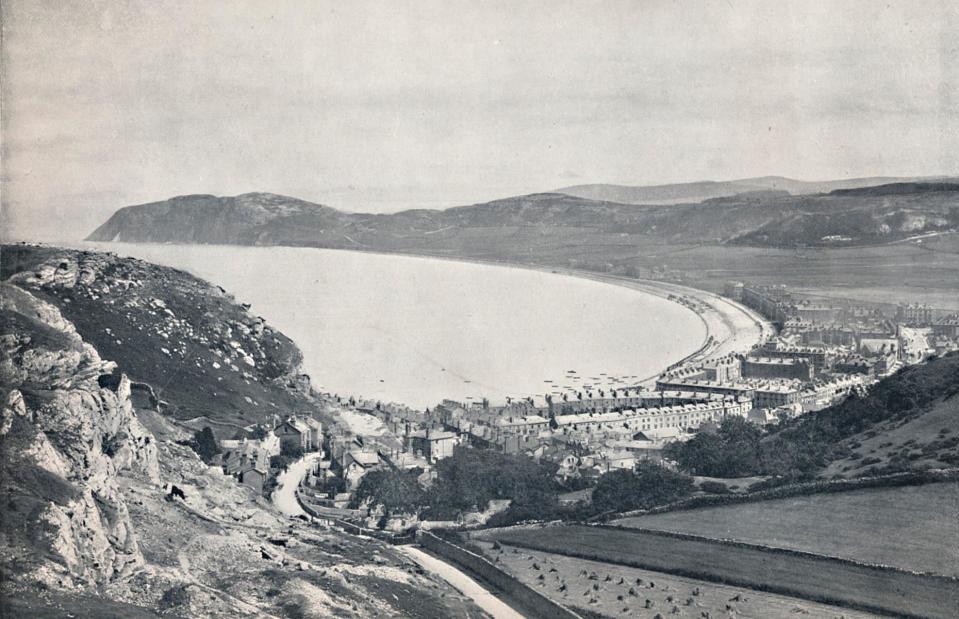
Print Collector / Getty Images
Llandudno’s main industry was mining before its landowner Lord Mostyn started building it up as a coastal resort in 1848. Attracted by Llandudno’s natural beauty, it didn’t take long for tourists to flock to the north Wales seaside town. The real boom came after the rail link was established in 1858. The first major attraction was the pier, which opened in 1877. A disused quarry was transformed into a landscaped garden known as Happy Valley in time for Queen Victoria’s Golden Jubilee in 1887. This was then connected by a cable tramway in 1902.
Now: Llandudno, Conwy County, Wales

Lukasz Pajor/Shutterstock
Despite its relative remoteness, Llandudno has managed to stave off the decline affecting other seaside towns by embracing its Victorian-era charm. Between summer 2021 and 2022, it received close to seven million visitors, most of which were day trippers. Each year, the Victorian Extravaganza brings family-friendly attractions to the town over the first May bank holiday, effectively kicking off the holiday season. While here, visitors can also enjoy the arcades along its 2,295-foot-long (700m) pier or ride the vintage Great Orme Tramway.
Then: Blackpool, Lancashire, England
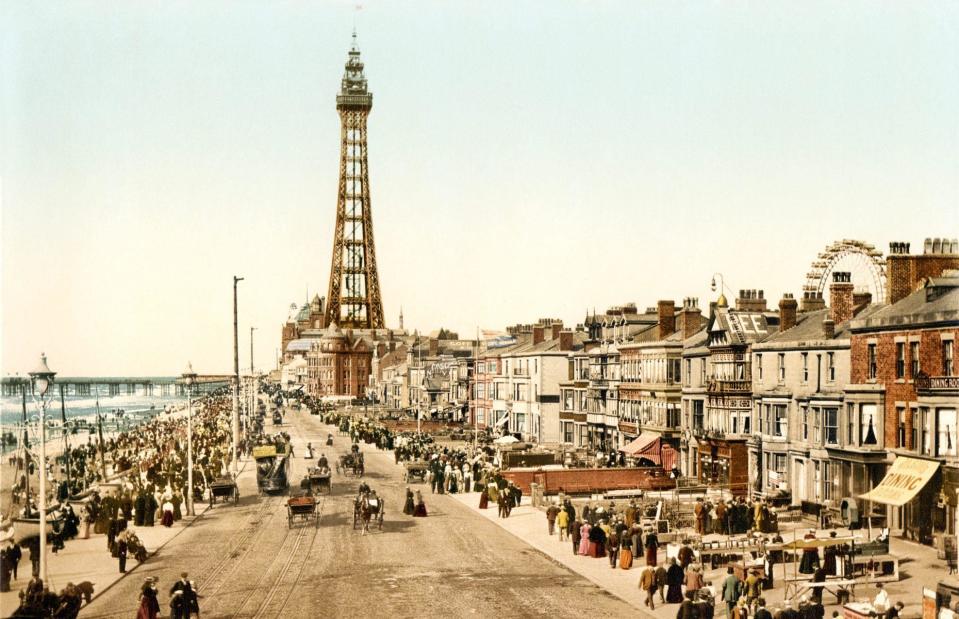
United States Library of Congress / Wikimedia Commons
The Lancashire town of Blackpool’s fortunes were also transformed by the arrival of a railway in 1846. Until then, it was sparsely populated by a handful of hotels, farms and residences. The rail connection helped its population to mushroom from 2,500 people in 1850 to 35,000 in 1890, and many of its notable attractions soon followed, including the three piers extending into the Irish Sea, the Winter Garden theatre and one of the UK's beloved landmarks, Blackpool Tower (built in 1894). Even the annual Blackpool Illuminations can be traced back to the Victorian era, having first begun in 1912.
Now: Blackpool, Lancashire, England
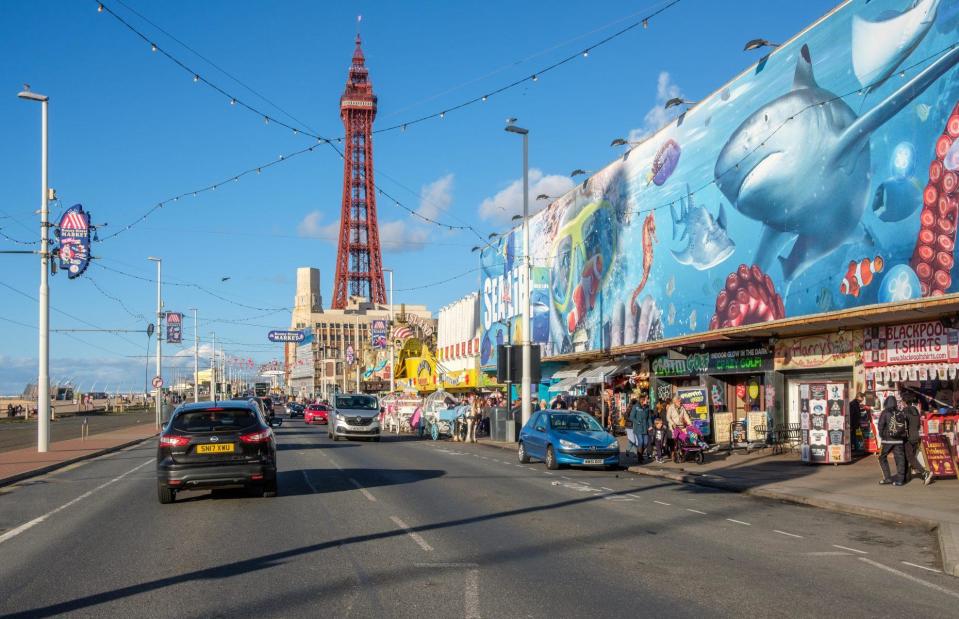
Rolf_52 / Alamy Stock Photo
In 2022, Blackpool enjoyed a record 20 million visitors, making it one of the most popular tourist destinations in the UK. What makes this town a little different is the fact that it offers a huge number of attractions, both retro and modern.
Those looking for nostalgia can embrace the vintage arcades and penny slot machines on the pier, while Blackpool Pleasure Beach has roller coasters and rides to rival those in US theme parks. Dance fans can strut their stuff on the famous sprung floor in the Tower Ballroom, and annual events, such as the Blackpool Air Show and Firework Championships, also attract huge crowds to the area.

